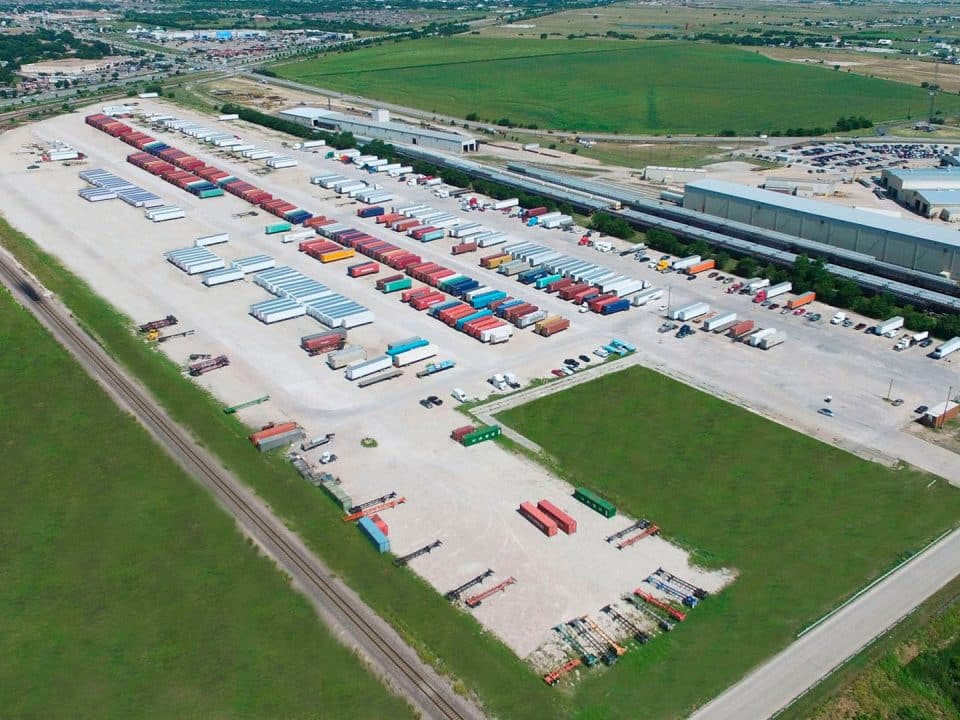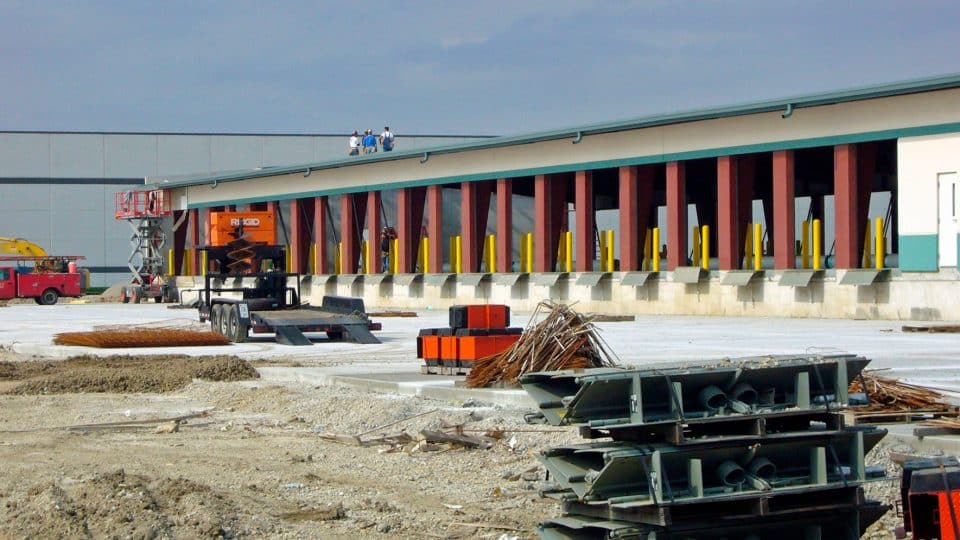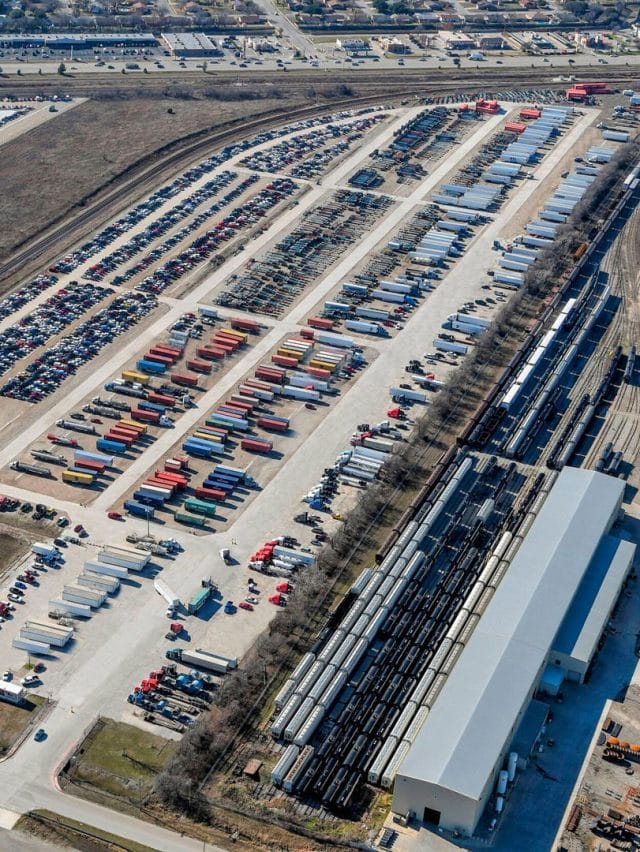
Industrial Outdoor Storage May Be the New Self Storage
This may be a good time to start noticing industrial outdoor storage (IOS) facilities, a tiny segment of the industrial sector dominated by small-to-midsize properties with fractured ownership and localized operations. It’s such a small part of the real estate business that you won’t find reliable aggregate returns and other market data to analyze. Instead, investors are left with little more than anecdotes to gauge a sector that has just begun to attract attention from a few major financial institutions. If IOS proves a smart investment, it wouldn’t be the first time alert real estate investors discovered a niche sector that proved profitable.
In the late 1980s, it was the apartment sector, which transformed from largely private to institutional investment producing returns that exceeded the broad market. Investor perception shifted from believing these properties too small and difficult to manage to seeing them as worth the effort to capture high-income yield and value growth. The investment mix shifted from exclusively individuals to a big percentage of institutional.
Fast-forward to the early 2010s and another overlooked sector — self-storage — went through a similar transition. It outperformed the overall commercial real estate market, default rates were virtually nonexistent and the income yield was high. Yet early on, just as with the apartment scenario, institutional investors viewed individual self-storage assets as too small to capture their attention. This was true until one institution crossed the barrier.
In 2012, Prudential Real Estate Investors’ prominent open-end investment fund hit pay dirt when it exited a joint venture established in 2005. This self-storage venture performed well through the financial crisis and subsequent recession — and it captured the interest of competing investment managers. As a result, institutional investors became increasingly comfortable with portfolios of self-storage assets for their larger funds.
The number of self-storage properties reporting to National Council of Real Estate Investment Fiduciaries (NCREIF), an industry organization for investment fiduciaries, more than tripled from 192 in 2014 to 648 in 2018 (Figure 1). By 2023, the sector’s contribution to the NCREIF Property Index (NPI) increased to more than 1,000 properties. The rising attention from institutional investors was rewarded with persistently higher returns. Figure 2 shows the higher returns of the self-storage sector over the broader NPI since Prudential’s disposition in 2012. These charts describe results from the last time a sector transitioned from disparate “mom and pop” ownership to institutional investment. It begs the question — is IOS the new self-storage?
Source: NCREIF as of Jan 2024
Source: NCREIF as of Jan 2024
The IOS property
The industrial sector, including IOS, has been one of the key property types for decades with a history of high yields — but low growth and little excitement. This began to change seven years ago when the sector started to produce consistent excess returns — sometimes to a phenomenal level. Naturally, investors took note and began increasing their industrial exposure which, in turn, led to more development. Over the past five years, the number of industrial properties reporting to the NPI has surged 61% and the value of the properties has almost tripled (Figure 3). This development represents great expansion in logistics including trucking, inventory storage, large equipment expansion and distribution staging. With all the activity associated with industrial development the industry faced a pressing challenge: Where can the growing number of trucks park, equipment be stored and staging take place?
Source: NCREIF as of Jan 2024
Enter industrial outdoor storage. The purpose of IOS properties is to service the needs of logistics where significant structures are unhelpful or even interfering. It is unnecessary to shelter truck trailers or storage containers from weather and some vehicles such as lifts and cranes are too large to pass through doors. Nevertheless, these assets need to be parked somewhere along the supply chain and during idle times.
IOS properties have distinct characteristics that make them unique from traditional industrial properties. First, these sites are used for equipment storage and maintenance, container yards, and distribution, fleet vehicle storage, trailer parking and drop lots. Second, they typically have a 20% or less floor area ratio (FAR), lower than warehouse or manufacturing properties. The typical IOS property is two to 10 acres of land with a 10,000-square-foot building surrounded by pavement for parking everything from heavy machinery to a fleet of rental cars.
Increasing demand
Traditional industrial warehouse buildings and IOS facilities are in high demand, as indicated in the increased growth in assets and return performance (Figure 3). Retailers and logistics providers require space for all sorts of operations, including transferring goods, parking vehicles, and storing containers, equipment and materials. Importers and manufacturers have similar but different needs for space to transfer finished products and store goods and materials. The high demand for industrial space has particularly fueled the demand for IOS facilities focused on distribution infrastructure and high-flow-through operations.
Given that IOS properties require little building on site, they can be cost-effective components of a distribution system. “For sites where it is difficult or costly to build traditional warehouses, IOS is unlocking value for end-users who need truck parking, container or pallet storage, etc,” said Olivia Diaz, a senior associate with SRS Real Estate in Atlanta, where she serves on a team to broker industrial and IOS properties. During a period of higher interest rates and rising expenses, companies are turning to IOS as a viable solution, she said.
Increasing distribution needs, in-fill location efficiencies, expanding truck and equipment inventory, and rising transportation costs are putting pressure on the limited supply of IOS sites near dense population centers. Expanding businesses and new organizations are competing for space to meet growing storage and processing needs. In addition to the private properties, the value of publicly traded industrial real estate investment trusts (REITs) increased to $178.1 billion from $76.6 billion over the past five years, according to the National Association of Real Estate Investment Trusts (NAREIT) Index. Between these two groups alone, there has been a tremendous increase in demand for warehouse space and IOS assets.

Supply constraints

The surge in demand for IOS facilities comes with a challenging trend — a decline in supply. Many existing IOS sites are being rezoned or redeveloped into traditional warehouse facilities. At the same time, developing new IOS facilities face significant challenges because of restrictive local zoning regulations.
Wary of heavy truck traffic and noise associated with distribution infrastructure, local governments and communities are imposing hurdles to developers seeking new entitlements to build logistics assets. This trend is pronounced for low-coverage IOS sites, which not only generate substantial traffic but also contribute the least to local property tax revenue among various industrial uses. To complicate things, IOS properties are often viewed as a haphazard collection of large unique vehicles and rusty storage containers.
The most desirable infill IOS sites are being consumed by higher-use development such as high-demand warehouse and manufacturing properties. Finding locations to replace these sites is increasingly challenging as land values rise and approvals are limited to park trucks and heavy equipment. There’s good news for existing owners and investors of IOS properties: these trends and limits on new sites increases the value of existing properties.
Fragmented market and the institutional turn
Data on the IOS sector are difficult to find and impossible to verify. IOS assets are typically privately held with fragmented ownership distributed among owner-occupiers, developers and individual investors. Information often comes from anecdotes and personal experience, much like the early days of investments in self-storage. Some analysts attempt to estimate the IOS sector’s size and performance from the properties that they are able to observe. Just how big is the IOS business? Matthews Real Estate Investment Services puts the IOS market’s aggregate value at $117.6 billion as of September 2023. This may sound large, but big investors have often overlooked IOS due to the relatively modest deal sizes, ranging from $5 million to $15 million. Large investors typically have minimum investment thresholds far higher than that. But a shift is underway. It seems some institutional investors may know something as they start to enter into the industry.
Among the early institutional investors is Denver-based EverWest Real Estate Investors, which has funneled roughly $200 million in the sector over two years and reportedly aims to double its investment in the next 18 months. Another firm, Alterra Property Group, has funds, such as IOS Venture III, that allow it to consolidate client capital and place funds exclusively in IOS assets. The Philadelphia-based company has teams dedicated to IOS investments and operates roughly 200 properties in more than 30 states. Up the coast, Brooklyn-based Zenith IOS is a vertically integrated firm that invests exclusively in IOS assets on the behalf of clients. In an article in Commercial Observer, entitled, “Industrial Outdoor Storage Primed for Growth,” Zenith CEO Benjamin Atkins traced how his company got interested in IOS. “These were not sites that were attracting a lot of institutional owners, both given the size and the fragmentation and the gross dollars involved in individual asset purchases … [I]t was also attractive from not just an operating perspective, but from an acquisition perspective,” he told the publication.
None of these companies are well known, but JPMorgan Chase is a name that everyone recognizes. During 2022, its subsidiary J.P. Morgan Asset Management invested $700 million in a joint venture with Zenith to acquire urban infill industrial locations in major cities. It is too early to tell but this could be the defining institutional turn that we saw in apartments and self-storage.
The Prudential self-storage transaction exposed an opportunity for institutional investors. Everyone wanted a piece of the action and more institutional investors entered the sector. Now JPMorgan Chase has placed a big investment in this previously obscure sector. If more institutional investors follow suit this may compress cap rates and increase the prices for IOS properties. No one wants to miss out on the hottest new asset class.
